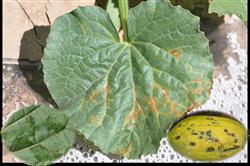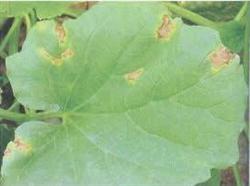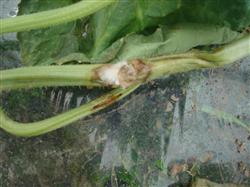How to deal with muskmelon seeds before planting

Muskmelon is generally planted in winter and spring greenhouse from November to December every year. In order to ensure that the whole seedling is the same as that after sowing, it is necessary to pre-treat the seeds before sowing. Seed selection take the seeds out of the bucket or bag, put them on a clean board or table, and select them by hand. Through the selection, the malformed, moldy, damaged and worm-eaten seeds mixed in the seeds were removed, and the full and uniform seeds were left for reserve. Drying seeds will spread the selected seeds evenly and evenly on clean paper or straw mats, and choose sunny, windless, sunny weather to dry. When drying, turn it every 2 hours so that the seeds are evenly exposed to the sun. Through drying, promote seed ripening, enhance seed vigor, improve seed germination potential and germination rate; at the same time, ultraviolet rays and higher temperature in sunlight can kill some of the germs carried on seeds and reduce the occurrence of diseases transmitted through seeds; and seed drying can improve its water absorption rate, which is conducive to seed germination. The method of warm soup is generally used for disinfection. 55 ℃ ~ 60 ℃ of water should be added to clean porcelain or glass containers, and the appropriate amount of water should be 5 times of the seed volume. Soak the sun-dried seeds in hot water and stir them gently with a glass stick or wooden stick in the same direction. With the continuous decrease of temperature, add hot water to the container at any time and keep the temperature of 55 ℃ ~ 60 ℃ for 20 ~ 30 minutes, so that the seeds are fully heated and heated evenly. Then keep stirring without adding hot water until the water temperature drops to 28 ℃ ~ 30 ℃. Remove the seeds, drain the water, and prepare to soak the seeds. After seed soaking, the sterilized and drained seeds were put back into the original container and poured into warm water of 28 ℃ ~ 30 ℃. After that, hot water was often added to keep the temperature of 25 ℃ ~ 30 ℃. After soaking for 6 hours and 8 hours, pour the seeds into a larger container, scrub gently with your hands and rub off the mucus on the seeds (because the mucus contains substances that inhibit seed germination, it is beneficial to seed germination after scrubbing). After scrubbing the mucus, rinse the seeds with clean water. Promote budding to drain the soaked seeds, wrap them with clean wet gauze, and wrap them with clean wet towels around the gauze to prevent water evaporation. Then put the seeds evenly at the bottom of the prepared container, insert a thermometer near the seeds in the container, and always check the temperature of the thermometer with hot Kang, electric blanket, etc., and control the temperature between 25 ℃ and 28 ℃ during germination, so as to eliminate the carbon dioxide and heat caused by seed respiration, exchange fresh air and supply oxygen. Under the condition of suitable temperature, it can sprout in about 24 hours, and when the seed begins to show white, it can be sown. When accelerating the bud, try to control the bud length within 0.5 cm to prevent the bud from growing too long. when the bud is too long, it is easy to break the bud and reduce the emergence rate.
- Prev

An ingenious way to prepare muskmelon nutritious soil
Muskmelon leaf blight, also known as brown spot, generally occurs in the peak period of melon, is a fungal disease, can make melon yield sharply reduced, melon less melon small, sweetness greatly reduced. When the external environment is suitable, it is easy to burst out in a short time. The pathogen is mainly harmful to leaves, but also often involves petioles, stems and fruits. Leaf blight starts from the base.
- Next

Prevention and treatment of potassium deficiency in muskmelon
When observing the growth of muskmelon, it was found that Sclerotinia sclerotiorum disease occurred in a small number of muskmelons in flowering and fruiting stage. the disease generally occurred sporadically and had no obvious effect on melon production. Prevention and control methods: (1) pay attention to ventilation and dehumidification, and remove the old base in time during the growing period.
Related
- Moge, come on! The staff of the peasant association in the producing area of cantaloupe were frightened when the crowd gathered.
- Causes and Solutions of low Fruit setting rate of Apple
- Symptoms and control measures of passion fruit virus disease
- Fruit growing lesson: how do apple orchards keep high yields?
- Can you build orchards in the mountains? What are the pros and cons?
- How to manage the coloring period of Crisson grape?
- This paper introduces the processing technology of two kinds of fig products.
- How much is a month for retired teachers in rural areas by 2020?
- How can strawberry planting increase sugar content? We should pay attention to management in many aspects.
- What are the cultivation techniques on how to improve the yield of golden fruit?

